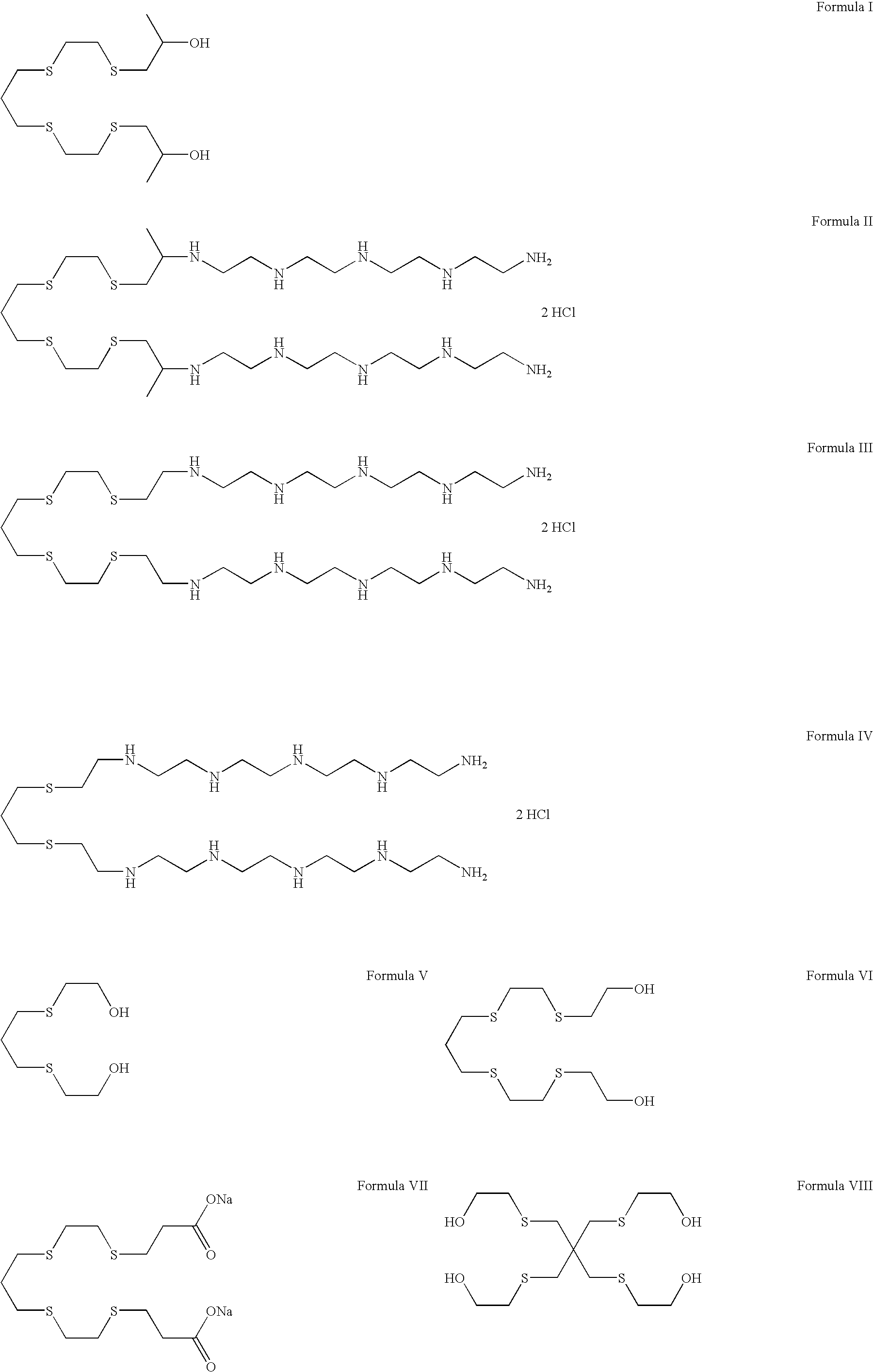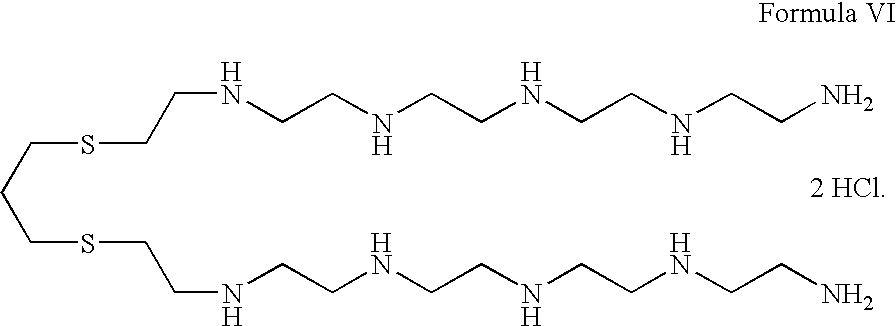Polythiaether compounds and their use as corrosion inhibitors
a technology of polythiaether and compounds, applied in the field of polythiaether compounds, can solve the problems of metal corrosion, environmental and safety concerns, and the amine unit presents a variety of corrosion control problems, and achieve the effect of inhibiting metal corrosion
- Summary
- Abstract
- Description
- Claims
- Application Information
AI Technical Summary
Benefits of technology
Problems solved by technology
Method used
Image
Examples
example 1
Synthesis of 3,7-dithianonane-1,9-diol
[0026]One hundred seventy grams of sodium hydroxide was mixed with 1000 mL of ethanol. While stirring, the mixture was heated to 83° C. to dissolve sodium hydroxide. Heat was turned off and 440 g of 2-mercaptoethanol was added through an additional funnel. To the resulting solution was added 1,3-dibromopropane in such a rate to maintain a gentle reflux without external heating. The resulting slurry was heated at 78° C. for 3 hours. Solid sodium bromide was filtered off and the ethanol solution was distilled under 1 atm to remove most of ethanol, and then under vacuum to remove residual ethanol. The resultant suspension was filtered again to remove solid sodium bromide, to give 392 g of the diol as a liquid.
example 2
Synthesis of 1,9-dichloro-3,7-dithianonane
[0027]A dilute sodium hydroxide solution scrubber was set up to absorb the hydrogen chloride and sulfur dioxide gases produced from this reaction. A 39.3 g sample of 3,7-dithianonane-1,9-diol from Example 1 was mixed with 40 mL of hexane. The two immiscible layers were vigorously stirred while 47.6 g of thionyl chloride was added dropwise at room temperature. The reaction temperature went up to 37° C. after about half of thionyl chloride was added and then cooled down. External heat was provided while the rest of thionyl chloride was added to maintain the temperature at 33° C. The resulting suspension was stirred for one hour after the addition was complete. A 1.5 g amount of ethanol was added to destroy any excess of thionyl chloride that might remain. Hexane was then removed by normal distillation followed by vacuum distillation, to give 45.7 g of the dichloride as a liquid.
example 3
Synthesis of 3,6,10,13-tetrathiapentadecane-1,15-diol
[0028]A solution of sodium salt of 2-mercaptoethanol was made by mixing 16.2 g of sodium hydroxide in 72 mL of ethanol with 31.6 g of 2-mercaptoethanol. The above solution was then added through an additional funnel to 49.1 g of 1,9-dichloro-3,7-dithianonane from Example 2. The exothermic reaction kept the reaction refluxing during the addition. A 20.4 g amount of ethanol was used to rinse the funnel. The resulting slurry suspension was stirred at the refluxing temperature for 1.5 hours. While hot, solid sodium chloride was filtered off and washed with 47.5 g of ethanol. Ethanol was removed from the filtrate by distillation under nitrogen at 1 atm and then under vacuum to give 63.2 g of the diol as a liquid, which solidified upon cooling.
PUM
| Property | Measurement | Unit |
|---|---|---|
| reaction temperature | aaaaa | aaaaa |
| temperature | aaaaa | aaaaa |
| temperature | aaaaa | aaaaa |
Abstract
Description
Claims
Application Information
 Login to View More
Login to View More - R&D
- Intellectual Property
- Life Sciences
- Materials
- Tech Scout
- Unparalleled Data Quality
- Higher Quality Content
- 60% Fewer Hallucinations
Browse by: Latest US Patents, China's latest patents, Technical Efficacy Thesaurus, Application Domain, Technology Topic, Popular Technical Reports.
© 2025 PatSnap. All rights reserved.Legal|Privacy policy|Modern Slavery Act Transparency Statement|Sitemap|About US| Contact US: help@patsnap.com


